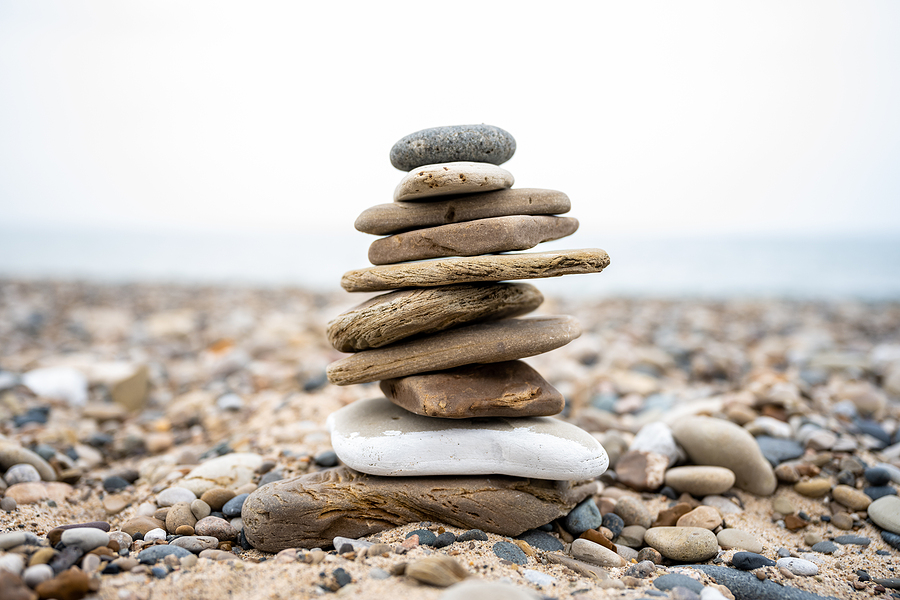
Understanding Trigger Stacking
Today, I’d like to discuss a concept that resonates with many of us: Trigger Stacking, its impact on our families, and the importance of discovering our inner resources.
Have you ever heard of Trigger Stacking? It’s a term commonly used in dog training but also profoundly impacts us and our children. It’s the accumulation of minor stressors that can overwhelm our nervous system.
Maybe you can relate – life’s little stressors piling up, one on top of another, until you find yourself overwhelmed, or even completely snapped? Many of us can, but we might not always have the tools to manage it effectively.
Recently, I embarked on a weekend trip to Oshkosh, Wisconsin, with a packed schedule. I had a 50th birthday party to attend on Friday and a wedding on Saturday, and it all started with a 1.5-hour drive in pouring rain. The rain was just the first trigger in a chain of events that left me feeling restless and overwhelmed. This set off a chain reaction of stressors, though I didn’t realize it at the time.
We arrived at the party late, triggering deep-seated issues from my childhood about tardiness. The environment was overwhelmingly busy, with a lot of people, many of whom I didn’t know. Multiple conversations were going on at the same time, with blaring TVs and loud music. For me, this was a sensory overload. There were no gluten-free food options for me to choose from, so I settled for a nutrition bar instead of the satisfying dinner I craved and needed. Later that night, hunger led us to another noisy place, intensifying the sensory overload I was already experiencing. When we arrived back at the hotel, I could feel my body buzzing and my mind racing. That night I could hardly sleep as I struggled to settle down and relax. It’s a prime example of how small triggers can accumulate and leave us with an overwhelmed nervous system.
These moments during my trip taught me the value of understanding trigger stacking and the power of our inner resources to navigate life’s challenges. Thanks to my awareness practices, I was able to gain perspective on what I experienced and consider how I could approach similar situations differently next time. I also learned that in the heat of the moment, it can be challenging to pull out our practices, for whatever reason, but with time and patience, we can become more skilled at doing so. It’s a humbling reminder that, even as I guide others, I’m still learning myself, and that’s a part of our shared journey.
Our kids experience this in their lives too. Have you witnessed it? Common stressors our kids face that can lead to trigger stacking are:
- academic pressure
- family conflict
- friend challenges
- bullying
- peer pressure
- sensory overload
- social anxiety
- extracurricular overload
- changes in routine
- parental expectations
- health issues
- traumatic events
- media and technology
- loss and grief
Any sound familiar? Children might not always have the words to express what they’re feeling. Overwhelmed by all the input, the brain might respond just as it would if there was a life-threatening situation and often will enter a fight, flight, or freeze mode. We all have different thresholds of just how much stimulation and input the brain can process before it “snaps.”
What does this look like? You might recognize it in certain behaviors either physical and/or emotional. Have you ever noticed your child being unusually irritable, restless, or anxious? These might be signs of trigger stacking in the making:
- irritability
- restlessness
- trying to leave a situation
- crying/meltdowns
- covering face or ears
- fear and anxiety
- fatigue
- can’t focus
To manage trigger stacking, we need to tap into the inner resources we all have – emotional intelligence, resilience, self-awareness, and coping mechanisms. By cultivating these inner resources, we can better navigate life’s challenges and teach our children to do the same.
This is where yoga and mindfulness come into play. They’re not just trendy buzzwords; they’re powerful practices for building resilience. These tools teach us to be present, acknowledge our emotions and needs, and build emotional strength.
So, my friend, I invite you to explore these ideas in your life. Have you experienced trigger stacking? Have you noticed it in your child?
Remember, we’re on this journey together, and I’m here to support you. Feel free to reach out if you have any questions or if you’d like to dive deeper into these concepts.
Wishing you a peaceful and mindful journey through life’s challenges.

You May Also Like


